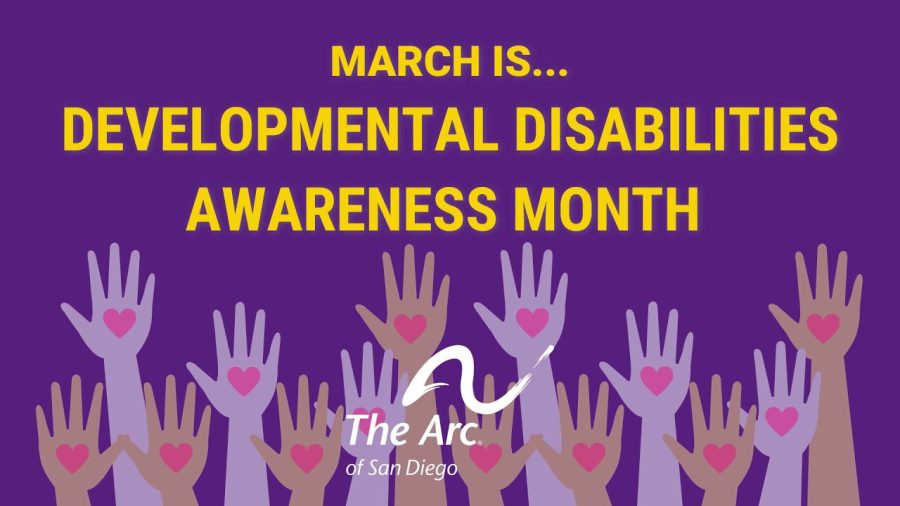National Developmental Disability Awareness Month
March is National Developmental Disabilities Awareness month, which was started to help bring public awareness of the needs of people with developmental disabilities and help provide them opportunities and support that they need to live and reach their full potential.
The Centers for Disease Control and Prevention (CDC) define developmental disabilities as impairments in physical, learning, language, or behavioral areas and include, but are not limited to: Autism Spectrum Disorders, Cerebral Palsy, Attention-Deficit/Hyperactivity Disorder, learning or intellectual disabilities, hearing loss, vision impairment, and other developmental delays. There are currently over 6 million individuals in the United States that have developmental disabilities.
People with disabilities have a long history of being mistreated, abused, and unable to receive the necessary accommodations and care. As a result of this mistreatment, there was an entire disability rights movement, which led to multiple laws being created to help protect and accommodate disabled people.
The Civil Rights Act of 1964 banned discrimination and segregation based on race, religion, natural origin, and sex in employment and all public places, such as schools, hotels, restaurants, churches, and hospitals. However, this did not help stop the discrimination against people with disabilities.
America had a huge increase in citizens with disabilities after World War II and the Vietnam War, as veterans returned home with multiple types of disabilities and now required new accommodations and medical needs. Veterans put pressure on the government to provide them with rehabilitation and vocational training after returning from sacrificing their lives for the country.
During the 1970s, disability rights activists petitioned Congress and marched on Washington for there to be civil rights language for people with disabilities included in the 1972 Rehabilitation Act. On September 26, 1973, President Richard Nixon signed H.R.8070: The Rehabilitation Act of 1973 (Section 504) into law. For the first time in history, the civil rights of people with disabilities were protected by law.
The Rehabilitation Act of 1973 (Section 504) replaced the Civilian Vocational Rehabilitation Act of 1920 (Public Law 236), and helped provide equal opportunity for employment within the federal government and in federally funded programs, as well as prohibited discrimination based on both physical and mental disability. The Architectural and Transportation Barriers Compliance Board, which mandates equal access to public services (such as public housing and public transportation services) to people with disabilities, and the allocation of money for vocational training was established by Section 504 of the Rehabilitation Act.
After being signed, the act was sent to Joseph Califano, head of the Department of Health, Education, and Welfare, where it sat on his desk for four years and was never acknowledged. On April 30, 1975, the American Coalition of Citizens with Disabilities (ACCD), a coalition of local, state, and national disability organizations, was co-founded. People with disabilities were fed with waiting, and the ACCD, headed by Dr. Frank Bowe, visited Joseph Califano and told him that if he didn’t enact it by April 4, 1977, they would protest.
On April 5, 1977, Judy Heumann went to the San Francisco federal building with about 100 others and began protesting. Across the country, people with disabilities visited federal buildings and began protesting. Protests were in Seattle, Denver, Dallas, Chicago, Atlanta, Washington D.C., Philadelphia, New York City, and Boston. However, none of these protests lasted more than 28 hours because most people with disabilities could not stay due to certain medical needs. Despite this, the protest in San Francisco lasted nearly 26 days, making it the longest non-violent occupation of a federal building in United States history.
This particular protest went on for so long because volunteers brought food and medicine for the protestors, and more people started showing up to support them. Groups of allies, veterans from the Vietnam war, members of Black Panther, and even the band Jefferson Airplane showed up to help. The protest gained media attention and the sympathy of the American people.
There were roughly 120 protesters, 14 individuals with disabilities, and eight aides were chosen from the group to go to Washington, D.C., to attempt to force a meeting with Califano. The group chosen was a unanimous, consensus-driven decision that happened after many days of discussion.
During the protest, FBI agents were guarding the San Francisco building. The agents mistakenly believed that with 22 people gone, they could force the remaining protesters to disband by creating conflict and prompting false bomb scares. This tactic did not work on the remaining protestors, as their main focus was holding the building. They knew that without a continuous sit-in drawing daily news reports, they would have little influence to persuade Califano to sign the regulations.
When they arrived in D.C., the demonstrators needed U-Hauls, because they were the only vehicles with ramps and enough room to park multiple protesters’ wheelchairs. Thankfully, another coalition partner, a machinists union, funded a few U-Hauls for the group. After arriving to meet with Califano, the group sang the protest hymn “We Shall Overcome” and forced a dramatic congressional hearing. During the meeting, Judy Heumann and Dr. Bowe both gave emotionally charged speeches to the assembled representatives and reporters, demanding changes be made.
In the following days, the group continued their fight, followed President Carter to his church, and followed Califano to a press club. After all this, Califano finally gave in and signed the regulations on April 28, 1977.
On February 26, 1987, President Ronald Reagan officially declared Proclamation 5613, making March National Developmental Disabilities Awareness Month as a way to help educate the public and to give encouragement and opportunities to people with disabilities, helping them lead productive and fulfilling lives.
Likewise, in 1988, October was declared National Disability Employment Awareness Month (NDEAM) by congress to celebrate the contributions of American workers with disabilities and showcase the inclusivity of workplaces.
Another important event for the disabled community was on July 26, 1990, when the Americans with Disabilities Act (ADA) was passed and signed into law by President George H.W. Bush. The ADA provides civil rights protections to people with disabilities, like those provided to individuals based on race, color, sex, national origin, age, and religion. The ADA prohibits the discrimination of individuals with disabilities and guarantees they have the same rights and opportunities as everyone else.
These events are extremely important to the disabled community as they have helped provide the support and protection people need, but sadly it isn’t enough. There are still plenty of people with disabilities who are mistreated, stigmatized, and in need of proper accommodations. This is why we recognize March as National Developmental Disabilities Awareness Month to bring awareness to the community and their needs.
At Fairmont State University, if a student has a disability and needs an accommodation, they can go to the office of Accessibility Services and register to request one. Students, or their advocates, can call 304-367-4543, email [email protected] or go to the office currently located in room 237 of Hardway Hall.
For more information, they can go to the Fairmont State University website under the ACADEMICS tab and click on the Office of Accessibility page or can click here.
If you are interested, Drunk History covered the protests of 1977, and it is available here on Youtube.








